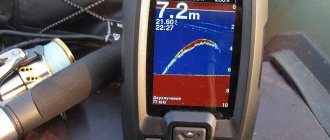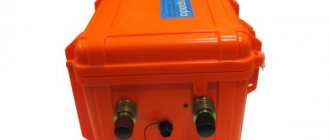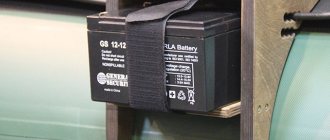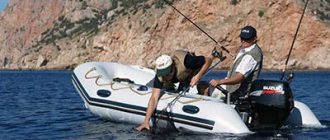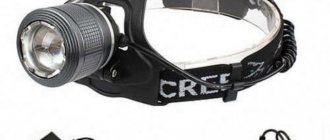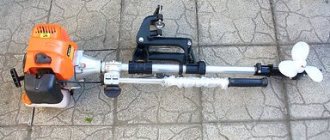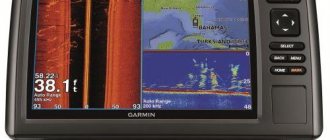Starter and deep discharge batteries
To charge a 12-volt battery, the charger must provide a voltage of at least 14 volts. However, if the voltage exceeds 15 volts, the battery will overheat, gas formation, evaporation of the electrolyte and deformation of the plates will begin.
This is what the cells of various lead-acid batteries look like - liquid acid, AGM and gel
Batteries charge and discharge through diffusion, the process by which ions penetrate the active plate material. Diffusion proceeds slowly, begins at the surface of the plate, and then spreads deep into its active material. During discharge, the plates of the traction battery absorb acid from the electrolyte and lead sulfate forms on them. The amount of electrolyte in the cell remains the same, but the acid content in it decreases.
When charging, the process goes in the opposite direction. Acid is released on both plates - the positive one turns into lead oxide, and the negative one into porous, sponge-like lead. After the battery is charged, the electrical energy it receives is no longer transformed into chemical energy, but is spent on the decomposition of water into hydrogen and oxygen.
Deep-cycle (traction) batteries have thick plates. It is thanks to the thick plates and dense active material in the grids that traction batteries hold a charge for a long time. In order for diffusion to occur not only on the surface, but also to spread deep into thick plates, traction batteries are charged in several stages. This currently common charging technology is based on the ability of batteries to absorb varying amounts of current depending on the state of charge.
Saturation stage
The first stage of three-stage charging is the saturation phase. The battery charges quickly, the output current of the charger is maximum, and the voltage on the battery depends on the degree of discharge of the battery. The duration of the saturation stage is determined by the ratio of the capacity that needs to be restored to the charging current.
The charging current during the first stage is 10–100% of the battery capacity and depends on the type of battery. The traction battery accepts this current until it reaches the first charging control voltage and is charged to 80% of its capacity. After this, its ability to absorb current decreases sharply. This first control voltage is called the absorption voltage, and the next charging phase is called the absorption phase.
If you need to charge several batteries, one of which has a capacity of 100 Ah or more, use such chargers
| Model | Sterling Power LPCU1230 | Sterling Power PCU1250 |
View charger specifications
| Suitable for: | All types of lead-acid and LiFePO4 batteries. 9 charging programs | All types of lead-acid and LiFePO4 batteries. 12 charging programs |
| Voltage, V | 12 | 12 |
| Maximum charging current, A | 30 | 50 |
| Number of outputs | 2 | 3 |
| Dimensions, mm | 199 x 158 x 70 | 315 x 215 x 90 |
| Weight, kg | 2 | 3 |
| ORDER | ORDER |
During the first stage, a large amount of energy is transferred to the battery in a short time; this charging stage is very efficient and brings the traction battery 75-80% of its capacity.
Absorption stage
The absorption stage occurs at the voltage reached at the end of the first charging stage, and the battery consumes only the amount of current that it can absorb at this voltage. The current decreases continuously until the battery reaches a fully charged state.
Charging and discharging a battery is a process of diffusion within the battery. When a battery is quickly but not deeply discharged, diffusion does not extend deep into the active material of the battery plates and chemical reactions occur only on their surface. After a shallow discharge, the second charging phase may be short or completely absent. However, long-term and deep discharge requires a long absorption phase.
The absorption stage is a compromise between high voltage and charging time. During it, the battery receives the remaining 20-25 percent of the energy and is considered charged when, at a constant voltage, the current consumption drops to 2 percent of the capacity.
Maintenance charging
The third stage is maintenance charging. After the current consumed by the battery has decreased to 1-2 percent of capacity, the charger lowers the voltage to 13.4 - 13.8 volts to prevent uncontrolled boiling and leakage of electrolyte.
Too high a support voltage leads to accelerated aging due to corrosion of the positive plates, and an insufficient one does not allow the battery to remain fully charged and leads to sulfation. The support voltage is different for traction batteries with liquid electrolyte and VRLA batteries.
Stabilization
The stabilization or equalization phase is used to prevent premature aging of lead-acid batteries with liquid electrolyte. This is an additional, often overlooked step that begins after charging has finished. When stabilizing, the process does not stop, and a current of 4 percent of the capacity continues to charge the battery until the voltage rises to 15.5 -16.2 volts.
The stabilization phase brings traction batteries to maximum charge, controlled boiling of the electrolyte and dissolution of lead sulfate crystals formed on the surface of the plates. Batteries with liquid electrolyte are stabilized every 20-50 cycles. Gel and AGM batteries are not subject to stabilization.
Recommendations for using LiFePO4 batteries
To extend the life of LiFePO4 batteries for outboard motors, you need to follow the recommendations for their use:
- Do not discharge to zero and do not leave for a long time (more than 48 hours) in a discharged state. It is advisable to charge batteries without delay.
- Store at temperatures from 0 to +25 ° C in a cool, dry place, away from heat sources and out of direct sunlight. The optimal charge level for long-term (seasonal) storage is 40–50%.
- Use a charger recommended by the manufacturer or identical to it. Charge batteries strictly at positive temperatures. After leaving the battery in the cold, keep it indoors for at least an hour and then charge it.
- Regularly clean the battery from dirt, check the reliability of its installation and the condition of the contacts of the wire tips on the pole terminals.
- Monitor the charge level and prevent it from critically decreasing. When the BMS battery is deeply discharged, the board goes into protection and the power supply stops. To remove the protection, simply connect the discharged battery to a charger.
To charge the battery, the charger plug is connected to the socket or to the bolt terminals, observing the polarity. When one of the cells in the battery reaches a voltage of 3.65 V, the BMS board automatically disconnects the battery from the current source. The balancing system then equalizes the charge and the charging process continues until the voltage across all cells reaches 3.65 V. After this, the charging process automatically stops.
Battery charging time
The charging time of the traction battery depends on the capacity that needs to be restored, the type of battery and the charging current. The less the battery is discharged and the higher the charging current, the faster the battery will be ready for use again.
If charging time is limited, such as on a boat or in a car, charge the auxiliary battery from the generator using a DC-DC charger
| Name | Sterling Power BBW1212 | Sterling Power BB1230 |
View charger specifications
| What batteries is it suitable for? | With liquid electrolyte, GEL, AGM, LiFePO4. Total 6 charging modes | With liquid electrolyte, GEL, AGM, LiFePO4. Total 9 charging modes |
| Maximum current, A | 25 | 30 |
| Rated input voltage, V | 12 | 12 |
| Rated output voltage, V | 12, 24, 36 | 12 |
| Protection class | Waterproof - IP68 | IP21 |
| ORDER | ORDER |
Charging time is affected by the duration of the absorption stage (last 20% of charge), which is about four hours. During absorption, the current consumed by the battery does not depend on the power of the charger, but is determined by the battery itself.
Battery efficiency
Battery efficiency is another factor that affects charging time. When charging, more amp hours are transferred to the battery than are taken away during discharge. The ratio of these two quantities is called charging efficiency.
The charging efficiency of a traction battery is close to 100% until gas formation begins, which means that part of the charging current is not converted into chemical energy stored in the plates, but is used to decompose water into oxygen and hydrogen. The ampere hours stored in the plates are given away during the discharge, and the water spent on decomposition is lost irretrievably. The size of the losses and the charging efficiency of the battery depend on:
- Type of batteries. Low gas emission – high efficiency
- Charging method. If the batteries are operated in a partial charge and discharge mode and are charged to 100 percent only occasionally, the charge efficiency will be higher than if the battery is charged to 100 percent after each discharge.
- Charging current and voltage. When batteries are charged at high current, high voltage and at high temperature, gas formation begins earlier and occurs more intensely. This reduces charging efficiency.
The average efficiency of traction batteries with liquid electrolyte is 80%, and gel and deep-cycle AGM batteries > 90%. This means that these batteries lose less energy and the charging time is shorter.
How to properly charge a traction battery
- The battery lasts longer if you discharge it to 30-50% capacity
- A discharge of 70 percent is the maximum safe value
- Do not leave batteries discharged for long periods of time
- Charge batteries after each use
- Do not mix old and new batteries into the same battery.
For deep-discharge batteries, use a charger that has a mode specifically for your battery. Different types of batteries require different algorithms, voltage and charging duration.
If you need to charge one or two batteries in wet or dirty conditions, use waterproof chargers.
| Name | Sterling Power PS1255 | Sterling Power PSP12202 |
View charger specifications
| Waterproof | Yes |
| Suitable for | Gel,AGM,served with liquid electrolyte, Optima |
| Voltage, V | 12/24 |
| Maximum current, A | 20 |
| Number of outputs | 2 |
| Dimensions, mm | 290 x 170 x 65 |
| Weight, kg | 3 |
| ORDER |
Undercharging
With regular undercharging, insoluble lead sulfate crystals form on the battery plates, which greatly reduce the performance of the traction battery. Lead sulfate increases resistance, causing the charger to incorrectly set the charge voltage and further undercharging the battery.
Batteries with sulfated plates cannot be returned to normal and must be replaced, so charge batteries fully and equalize wet batteries every six to eight weeks.
Reload
It has especially tragic consequences for gel and AGM batteries. With constant recharging, the electrolyte boils away and thermal runaway occurs, in which the battery becomes hotter and hotter.
Ask a question,
and get advice on outboard electric motors, batteries or chargers for a boat or yacht
31.03.2018
Traction batteries are successfully used to power boat electric motors and other onboard equipment. Such devices are capable of ensuring continuous movement of a boat or boat using electric traction. They have a sealed housing and a high degree of protection against depressurization, are resistant to vibration, mechanical stress and temperature changes.
Lithium traction batteries have the best performance characteristics. They:
- approximately 70% lighter than AGM and gel counterparts;
- have minimal self-discharge;
- reliable to use;
- have high efficiency;
- have an operational life of up to 2000–3000 charge-discharge cycles;
- charge quickly;
- operate in the temperature range from -20 to +60°C.
It’s not for nothing that lithium traction batteries are installed on board all sports and professional boats, yachts and sailboats today.
Methods for charging boat traction batteries
There are several options for operating and charging LiFePO 4 traction batteries:
- Suboptimal or “A full tank is always better.” Users keep the battery fully charged at all times. After using the battery, always charge it yf 100%. They keep it charging for a long time, trying to “balance” it perfectly. Answer: This method of use results in frequent recharging of batteries and storage away from the manufacturers' recommended storage conditions - SOC - 50%.
- Mixed mode of use with battery operation within the charge limits of 10-95%, storage in SOC 50% and periodic charging up to 100% to balance the battery parallels. In this case, the battery is recharged each time before use. This method of use and charging is currently the most progressive and can significantly extend the battery life.
- Lazy. The battery is stored discharged after use, then, before use, it is charged with high currents. Damp and cold storage conditions. Charging at subzero temperatures. All this negatively affects the battery and its service life.
Boat battery test
ATTENTION! Batteries constantly produce hydrogen. This gas is explosive. Always wear safety glasses and handle batteries carefully.
Open circuit voltage test
Before you start checking any battery, including a boat battery, it must be fully charged. You can find out the battery capacity using a digital universal measuring device. Connect the device to the battery terminals. A fully charged 12-volt battery will read at least 12.6 volts (2.1 volts per cell). If this number is 12.4 volts or less, you will need to charge the battery before testing.
| Voltage | Charge percentage |
| 11,7 | 0% |
| 12,0 | 25% |
| 12,2 | 50% |
| 12,4 | 75% |
| 12,6 | 100% |
Rules for charging boat traction batteries
When choosing how to charge traction batteries for electric boat motors, you need to consider where you will charge the battery. With LiFePO 4 it is easier, you can easily remove the battery from the boat and take it to the charging place alone. You also need to determine the charging intensity. If you are using a 40-100 Amp-hour traction battery, you can use a portable charger with a charging current of up to 10 A and charging will be completed in 4-10 hours.
If there are no closed compartments on a boat or other vessel, it is necessary to use completely waterproof chargers with protection category IP67 or IP68. The chargers used must be designed for the specific type of battery, otherwise they may supply inappropriate currents and cause significant damage to the boat battery.
Recommendations for charging and operating lithium traction boat batteries
- Do not open the battery, as breaking the seal may cause corrosion and lead to a short circuit.
- Use a charger with a CC/CV charging algorithm.
- Recharge the battery if it is discharged.
- Follow the requirements set out in the operating instructions for the purchased battery.
- Try to use the battery in the capacity range of 10–95% to prevent it from being severely discharged and quickly restore the charge.
- Choose a battery with a larger capacity. The larger the capacity, the greater the current the battery can deliver; therefore, at a given load, the specific load will be less and the service life will be longer.
Boat batteries for electric motors are chemical sources of current, and, accordingly, like any chemistry, they require careful attention to it.
We bring to your attention another informative article - about the types of lithium batteries.
Sealed traction lead-acid batteries Volta bikes 6DZM series are designed for use in light electric vehicles. Lead-acid batteries are installed in almost all models of electric scooters and electric ATVs, some models of electric bicycles and electric scooters. This is an unpretentious and reliable DC source that does not require any maintenance throughout its entire service life, which, moreover, costs less than lithium-ion batteries of similar capacity.
Typically, Volta bikes lead-acid traction batteries, when used correctly, last from 3 to 4 years. Under conditions of constant full discharges, the service life can be reduced to 2 years. When used with a low level of discharge, batteries can last up to 5 – 7 years. By following simple rules, you can maximize the life of traction lead-acid batteries.
When first starting out, determine the maximum estimated charge time for your lead-acid battery by dividing the battery capacity in amp hours by the charger amperage in amps. For example, a completely discharged (up to 10.5v) 24v14Ah battery at a temperature of + 25 degrees Celsius will be charged by a charger with a current of 1.8A in approximately 7.8 hours. (7 hours 50 minutes +/- 30 minutes).
Lead-acid batteries are a chemical source of current. When current is supplied from the charger, some chemical reactions occur in the battery, and when the battery is discharged, others occur. You can read more about this here. The rate of chemical reactions is affected by the temperature of the electrolyte. The optimal electrolyte temperature is +25 degrees Celsius. It is for this temperature that the nominal capacity of the batteries is indicated. When the temperature of the electrolyte increases, their capacity increases, and when it decreases, it decreases.
If the battery temperature is lower than recommended for charging (18 - 25 degrees Celsius), then their charging time will increase in proportion to the decrease in temperature. At temperatures below +10 degrees Celsius, charging efficiency is greatly reduced. At subzero electrolyte temperatures, it is almost impossible to fully charge a lead-acid battery. Therefore, before charging, it is recommended to warm up the batteries by placing them in a room at room temperature for several hours.
Types of traction batteries and their characteristics
Knowing the basic parameters of traction batteries is very important, because only in this case the product will be correctly selected, installed, and during operation consumers will not be connected to it in excess of the power limit calculated by the manufacturer.
The main batteries of this type are:
- Lead-acid. Cheap batteries that have the necessary qualities for use as traction batteries. The main disadvantage of such devices is their heavy weight.
- Nickel-cadmium. They have a long service life and are able to provide various self-propelled vehicles with electric current in the required volume. Ideal for forklifts, stackers and other warehouse equipment.
- Nickel metal hydride. High quality battery that can be used in a variety of tools and machines. Ideal for electric bicycles, wheelchairs and other low-power equipment.
- Lithium polymer. Modern devices in which there is no memory effect, and performance is maintained over a very wide temperature range. Due to its high cost, it is rarely used as a traction battery.
- Lithium iron phosphate. Ideal for electric motors of powerful cars and other types of equipment. They can also be used as the main electricity storage devices in a UPS.
- Lithium-ion. This type of modern traction batteries is the most common and is used as a battery for electric vehicles in uninterruptible power supply systems. Such electricity storage devices tolerate deep discharge well, have a long service life and can maintain voltage for a long time without loss.
Almost all of the listed battery models are effectively used as a source of electromotive force. The main criterion for selecting such products is the ability to withstand deep discharges and maintain electricity at rest. The possibility of using devices in high-power electrical engineering largely depends on these characteristics.
For loader
